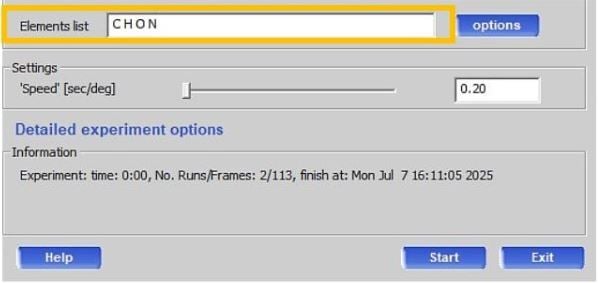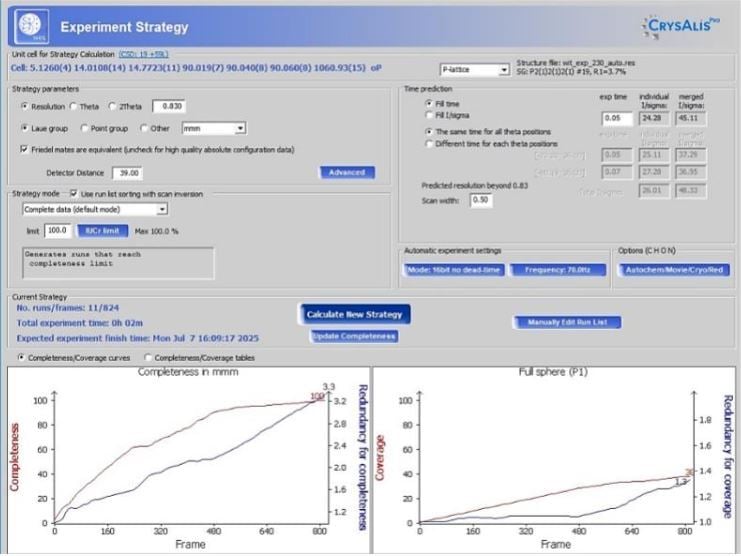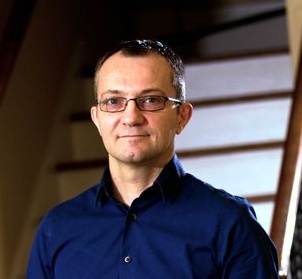CrysAlisPro Tip
Strategy Calculation for a IUCr-standard Dataset from a “What Is This?” Preliminary Crystal Structure
What is the purpose?
CrysAlisPro allows crystallographers to collect a fast, low-resolution dataset to determine the connectivity of their compound and thus identify the material. However, this feature, called “What Is This?”, does not aim to collect a complete dataset and may not support full refinement of the model. In the event the crystallographer wishes to continue to collect a dataset to IUCr standards, CrysAlisPro offers a path to a full data collection strategy using the “What Is This?” preliminary model. This also means strategy is based on a more definitive model than is possible with a simple pre-experiment, providing better intensity estimates and reducing the chances of incorrect symmetry and associated completeness problems.
Running “What is This?”:
After Screening, two paths are possible:
- Run a pre-experiment, which collects data in several orthogonal crystal orientations for accurate indexing, orientation matrix calculation and IUCr-standard strategy calculation.
- Run “What Is This?” to obtain a preliminary model of the compound’s crystal structure.

2. In the new dialog, one only must enter the list of expected chemical elements in the compound. The strategy is pre-defined, built for two different types of lattices: 1) triclinic/monoclinic and 2) orthorhombic to cubic, consisting of phi scans allowing for a minimum of 60% completeness. The exposure time is automatically estimated by CrysAlisPro based on the intensity of the reflections collected upon Screening.

Determining an IUCr-standard dataset from the “What Is This?” preliminary model:
Provided the crystal structure has (mostly) been solved, a strategy for a full dataset to IUCr standards can be determined.
1. From the top, right corner of the CrysAlisPro interface, select ‘START/STOP’ and then select “Start new (based on solved structure)” from the list of options:

2. The usual strategy dialog will then open with a default strategy proposed:

3. Proceed as usual if you wish to change any parameters or start the data collection.
Author

Rigaku Americas Coporation | Texas, USA
Dr. Pierre Le Maguerès obtained a Ph.D. in physical chemistry and small molecule crystallography at the University of Rennes (France) in 1995, working under Dr. Lahcene Ouahab on the synthesis and analysis of molecular materials combining inorganic polyoxometalates and organic cation radicals based on tetrathiofulvalene derivatives. From 1996 to 2000, Dr. Le Maguerès worked as a postdoctoral researcher with renowned Prof. Jay Kochi at the University of Houston, where he pursued his work on the synthesis and X-ray characterization of air-sensitive cation radicals and charge transfer complexes. In 2000, deciding to broaden his horizons and learn protein crystallography, Dr. Le Maguerès joined the biochemistry department at the University of Houston and worked as a postdoctoral researcher with Prof. Kurt Krause on the design and X-ray characterization of potential new inhibitors for alanine racemase, a protein essential for the growth of infectious diseases such as tuberculosis. Want to learn more? Connect with Pierre Le Magueres, PhD LinkedIn .

Subscribe to the Crystallography Times newsletter
Stay up to date with single crystal analysis news and upcoming events, learn about researchers in the field, new techniques and products, and explore helpful tips.

Contact Us
Whether you're interested in getting a quote, want a demo, need technical support, or simply have a question, we're here to help.
